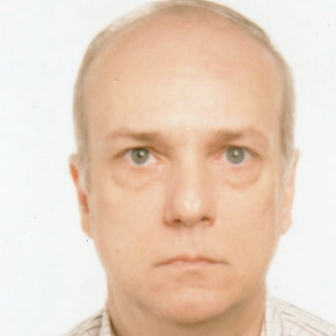Matter-Radiation Interactions—In Memory of Professor Francesco Saverio Persico
A special issue of Physics (ISSN 2624-8174). This special issue belongs to the section "Atomic Physics".
Deadline for manuscript submissions: closed (31 January 2024) | Viewed by 8003
Special Issue Editors
Interests: laser interaction with atoms, molecules and nanomolecules; atoms and molecules in strong field; high-harmonic generation; attosecond-pulse generation; computational physics; molecular dynamics
Interests: casimir physics; quantum electrodynamics; quantum fluctuations; radiative processes in static and dynamical structured environments; quantum field theory in accelerated frames and in a curved space-time; quantum optomechanics; resonances and dressed unstable states; microscopic origin of time asymmetry in quantum physics; cosmological axions and dark matter; axion electrodynamics
Special Issues, Collections and Topics in MDPI journals
Interests: quantum electrodynamics; vacuum fluctuations; casimir effects; causality and non-locality in QED; radiative processes in static and dynamical structured environments; quantum field theory in accelerated frames; unruh effect; cosmological axions and dark matter
Special Issues, Collections and Topics in MDPI journals
Special Issue Information
Professor Francesco Saverio Persico

Dear Colleagues,
This Special Issue is dedicated to the memory of our colleague and friend Professor Francesco Saverio Persico, who passed away in 2017. He has been Professor of Theoretical Physics at the University of Palermo, Italy. He has given fundamental contributions to theoretical condensed matter physics, quantum optics, quantum electrodynamics, atomic and molecular physics.
This Special issue will include original papers and review papers on subjects related to the research fields where Prof. Persico has been active, mainly atom-radiation interaction, quantum vacuum fluctuations, Casimir and Casimir-Polder interactions, radiation-mediated intermolecular interactions, spin-phonon interactions, atomic and molecular physics in strong external electromagnetic fields, high harmonic generation and nonlinear quantum mechanics, laser interaction with molecules and nanomolecules, superradiance, and in general in the fields of quantum optics and quantum electrodynamics, atomic and molecular physics, as well as condensed matter physics.
All these research subjects are still very active subjects of the current research in theoretical and experimental physics.
Prof. Dr. Pietro Paolo Corso
Prof. Dr. Roberto Passante
Dr. Lucia Rizzuto
Guest Editors
Manuscript Submission Information
Manuscripts should be submitted online at www.mdpi.com by registering and logging in to this website. Once you are registered, click here to go to the submission form. Manuscripts can be submitted until the deadline. All submissions that pass pre-check are peer-reviewed. Accepted papers will be published continuously in the journal (as soon as accepted) and will be listed together on the special issue website. Research articles, review articles as well as short communications are invited. For planned papers, a title and short abstract (about 100 words) can be sent to the Editorial Office for announcement on this website.
Submitted manuscripts should not have been published previously, nor be under consideration for publication elsewhere (except conference proceedings papers). All manuscripts are thoroughly refereed through a single-blind peer-review process. A guide for authors and other relevant information for submission of manuscripts is available on the Instructions for Authors page. Physics is an international peer-reviewed open access quarterly journal published by MDPI.
Please visit the Instructions for Authors page before submitting a manuscript. The Article Processing Charge (APC) for publication in this open access journal is 1400 CHF (Swiss Francs). Submitted papers should be well formatted and use good English. Authors may use MDPI's English editing service prior to publication or during author revisions.
Keywords
- atom-radiation dressed states
- vacuum fluctuations and related effects
- casimir physics
- atomic and molecular physics in strong external fields
- nanoscale molecules driven by a laser field
- persistent currents
- high harmonic generation (HHG)
- dressed states in quantum field theory
- spin-phonon interactions in condensed matter physics
- superradiance
- cavity quantum electrodynamics
- radiative processed in structured environments
- unruh effect and hawking effect
- quantum field theory in a curved spacetime







